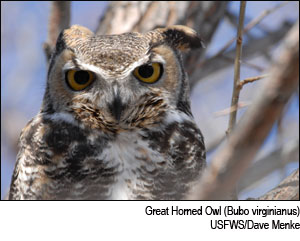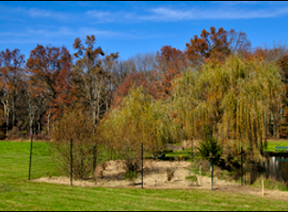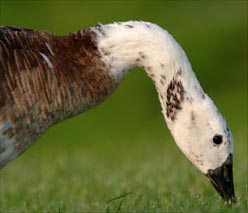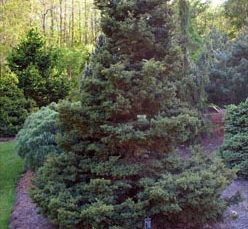

Oh, I forgot to tell you. I am an owl — humans call me a great horned owl, and I guess I am bigger than other owls in New Jersey. I stand about 22 inches tall and have a wingspan of about 55 inches (that’s about 4 1/2 feet). I am a bird of prey, so when I look for my dinner, I catch, kill and eat other small animals in order to survive. An owl killing and eating another animal is no different from a robin eating a worm or a gull eating a fish.
Hunting at night, I use my extraordinary vision and excellent hearing to locate my prey. My wide wings, lightweight body and unusually soft, fluffy feathers allow me to fly silently. My eating habits might put you off, but when I seize a rodent or other small mammal, I kill it with my powerful feet. If the prey is small enough, I swallow it whole. Otherwise, I tear it apart with my hooked beak.
I am told that my amazing digestive system assimilates the nutritious portions of the prey. Then the undigested parts (hair, claws, teeth, etc.) are regurgitated in the form of pellets and scattered on the ground.
One blessing I have is that all owls are protected by state and Federal regulations. It is illegal to kill or capture an owl. It is also illegal to possess an owl, living or dead, without the proper permits from both the U.S. Fish and Wildlife Service and the State of New Jersey.
I can say with confidence that owls pose no threat to humans. Adult owls will, of course, defend their territory and their young against any intruders, human or otherwise. However, humans do not always return the favor. Humans continue to pose a number of threats to owls: we sometimes collide with their automobiles and their windows, or we consume the environmental contaminants they leave around. They also destroy the critical habitat, the fields and forests, where we live and hunt.
But, let me take you back to that September night when I collided with the large glass window. I fell to the ground because, it turned out, one of my wings was broken. I felt so vulnerable, lying there helpless on the ground. It was a very long and scary night for me. But, at sunrise I heard footsteps. The farmer was outside and about to do his chores, when he noticed me and came over for a closer look.
The farmer, being experienced with animals, saw immediately that my wing was broken — perhaps it was the bone fragments poking through the skin of my wing. He knew what to do, and went to the barn to bring back a blanket. He placed the blanket over me carefully, scooped me up and set me in a large cardboard box, which he placed in the cab of his pick-up truck. Then he told his wife he was headed to The Raptor Trust in Millington, at the edge of the Great Swamp, to find some help for me.
Fortunately, The Raptor Trust staff were able to accommodate. They began their care by getting an X-ray of my broken wing. Sure enough, there were breaks in two places, so they pinned the bone fragments back into place. I was encouraged by their kind manner — perhaps I would fly again, after all. The staff also recognized the damage to the soft tissue of my wing (muscles, blood vessels, etc.). Circulation to the wing could well have been compromised, preventing it from healing. Only time would tell. I would need to be patient.
By mid-November the bones were starting to knit together. It was time to remove the pins that had been put in to hold the bone fragments together. The staff at The Raptor Trust seemed happy with my progress, but the injured wing was tight, unable to extend fully. I knew I wouldn’t be able to fly like that.
Progress was slow, but by February I was flying short distances. Then they decided to move me to a bigger flight cage to see what I could do. Even though I had flown a bit, it still took time to regain the strength and stamina I had lost while recuperating. They put me in the largest flight cage at The Raptor Trust, and by mid-April I was flying like an eagle. I was ready to go home.
Before release, I was fitted with a U.S. Fish and Wildlife Service band. The metal band will remain on my leg for the rest of my life. If humans ever encounter me again, it can easily be determined where and when I was banded. I overheard that banding birds is important because it allows for the study of bird movements, survival and life span.
The folks at The Raptor Trust didn’t just open the cage and shoo me away. It was decided to transport me back to the farm where I had gotten into trouble because, after all, that is my home. After the drive, they removed me from my transport crate and released me into the air. It was great to take a few powerful flaps and soar over familiar territory. I think I even saw a farewell wave from my Raptor Trust friends as I soared away — home again.


